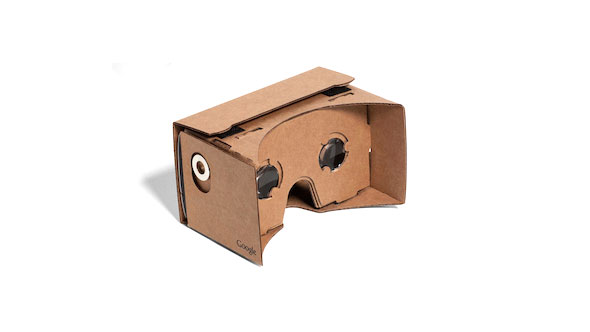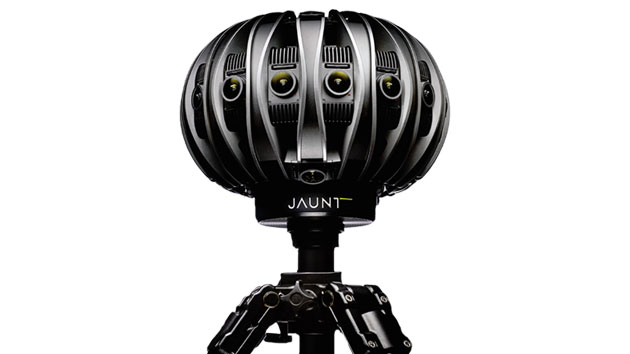The VR gurus at Jaunt have teamed up with the pipeline experts at Shotgun Software, enlisting Shotgun's help to develop a specialized production management platform for VR production. The companies said tools developed for Jaunt by Shotgun's in-house pipeline team include improved workflow for editorial and better integration with the Jaunt Cloud — the company's dedicated, cloud-based system for stitching together and rendering multicamera recordings.
Among Jaunt's recent 360-degree productions are music video projects for Paul McCartney and Ray Lamontagne, documentary shorts for The North Face, and a promo for Zoolander 2.
"We are proud to be working with Jaunt VR, who is helping to lead the charge in the rise of VR," said Shotgun Software co-founder Don Parker in a prepared statement. "We have always innovated by working closely with our clients, and we're excited to be building up our understanding of the challenges VR studios go through while working shoulder-to-shoulder with Jaunt."
A Familiar Feature Set
It wasn't a stretch for Jaunt and Shotgun to come together, according to Jaunt Director of Production Buckley Collum. "A number of us at Jaunt come from the visual effects and computer graphics industries," including Jaunt Studio President (and former Digital Domain CEO) Cliff Plumer, Collum told StudioDaily. "I've worked with Shotgun before and Cliff has worked with them before, and many people here are familiar with it. The thing we're really pushing Shotgun on is encapsulating the whole production process, not just post-production."
That means incorporating principal photography in the pipeline and turning more attention to editorial, which Collum considers key to Jaunt's success in VR. "We realized that the process for VR creation, especially if Jaunt Studio does it [in-house], needs to incorporate editorial's efforts," Collum said. "We reached out to Shotgun to get development in areas that would take better advantage of Shotgun in the editorial workflow. The Shotgun development team has worked with us both in house and remotely to get editorial ingest-and-review tools automated and in place in our studio."
Speaking of review tools, playback capability through head-mounted displays is critical to Jaunt's pipeline, and support for the Oculus Rift, the PlayStation VR, and the HTC Vive could eventually be incorporated into RV's feature set, Shotgun officials said.
Cloud Computing
Jaunt's pipeline is also closely integrated with the Jaunt Cloud. Collum describes it as a "highly parallelized system" that takes the 24 individual camera views from Jaunt's proprietary Jaunt One 360-degree camera system [pictured at the top of this page] and stitches them into a 360-degree panaroma at 4K resolution runnning at 60fps.
"When this data is brought in, it's a huge amount of data — at least 40 times the amount of data of a traditional HD video experience — so we spread that out into the Jaunt Cloud and run it on many nodes at one time, breaking it into smaller bits [for processing] and then concatenating those," Collum said.

Bigger and Better
Asked about the capacity and bandwidth required for a stereo-3D VR experience, Collum said the main limitation at this point may be the playback hardware. "The ultimate end-user market is going to be people on their smartphone," he said. "Some people will have a high-end head-mounted device attached to their PC or their PlayStation 4, but for the most part it'll be people with a Samsung Gear VR or iPhone app watching on a handheld device. As we look to move above and beyond 4K resolution, the problem is decoding those videos can be taxing on small phones. If you want everybody in the world to pull out a smartphone and watch VR in an app, you're constrained by what that smartphone can do.
"We're keeping everything in the 4K range, with a bitrate that will download and stream very well. Over the months and years to come, the phones will get better and faster and the network speeds will improve. So downloading and decoding and playing back in real time an image above 4K will happen, and that makes for a better viewing experience. But right now 4K seems to be the sweet spot for newer phones."
Crafts: Editing Post/Finishing Shooting
Sections: Technology
Topics: Project/Case study jaunt shotgun software VR
Did you enjoy this article? Sign up to receive the StudioDaily Fix eletter containing the latest stories, including news, videos, interviews, reviews and more.










Leave a Reply